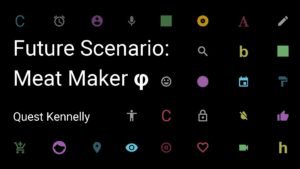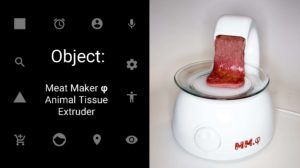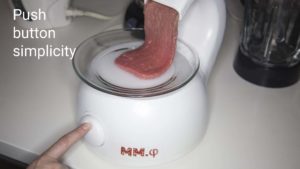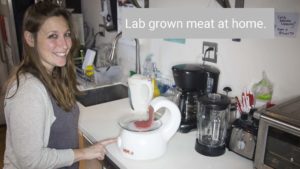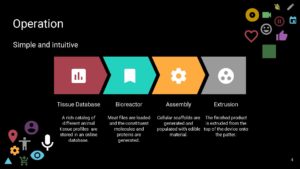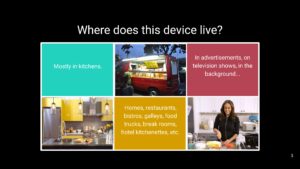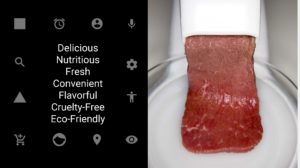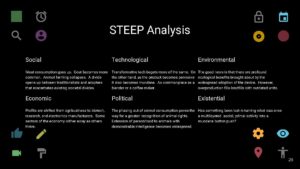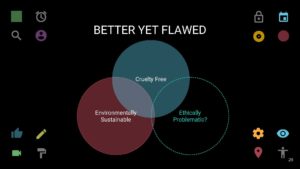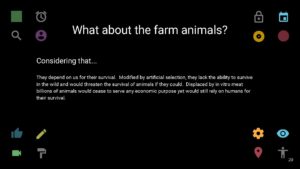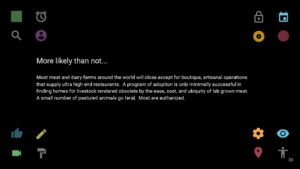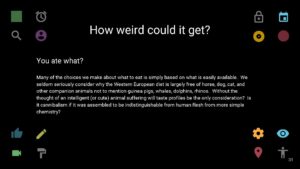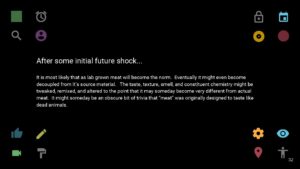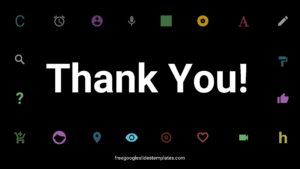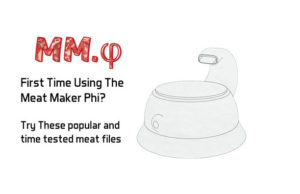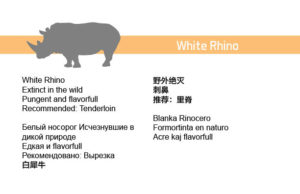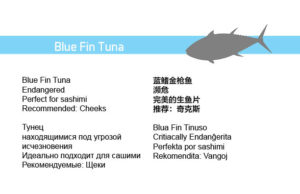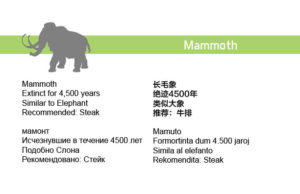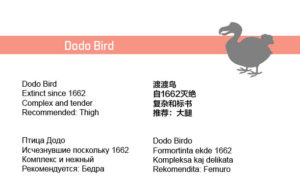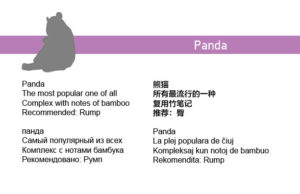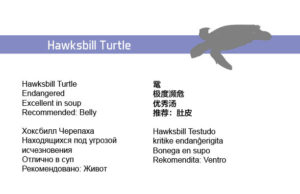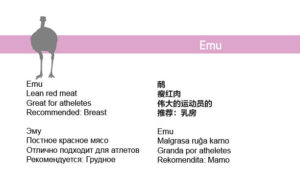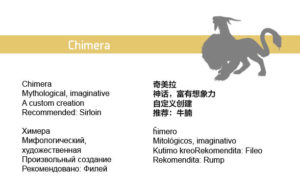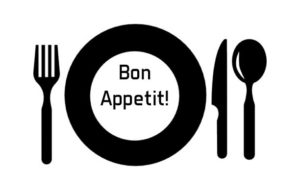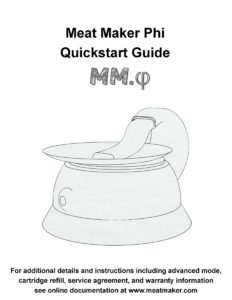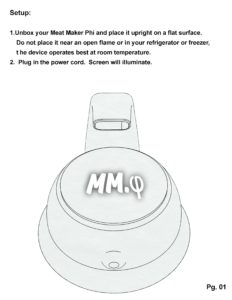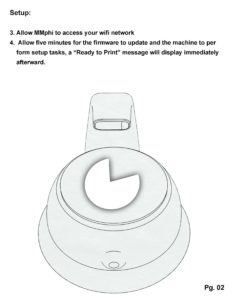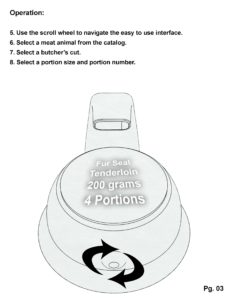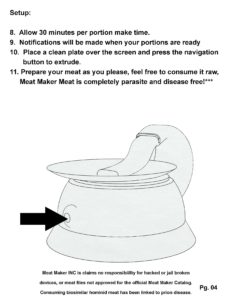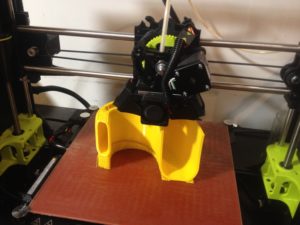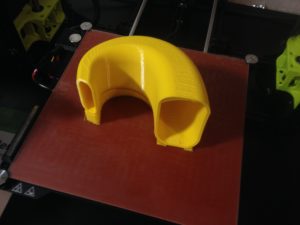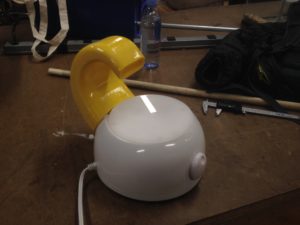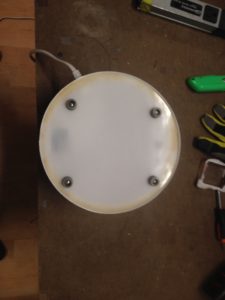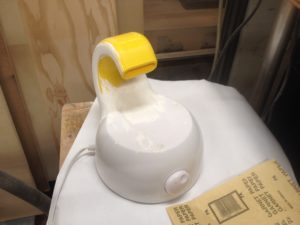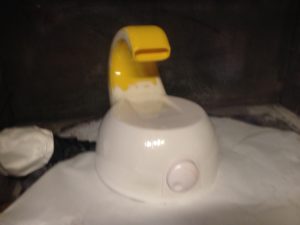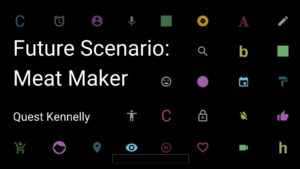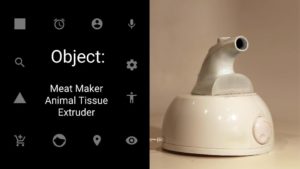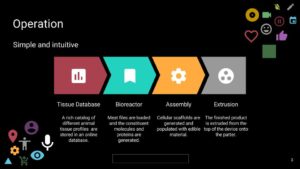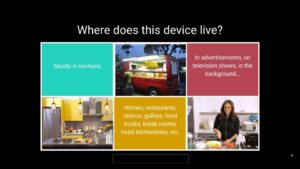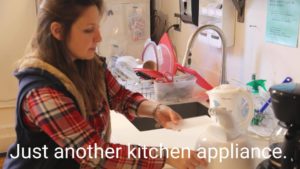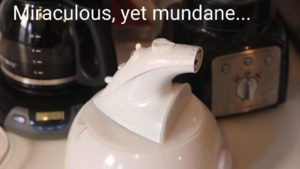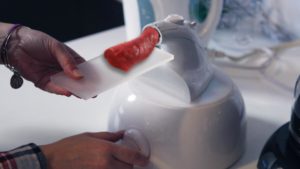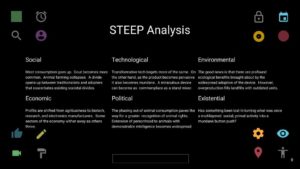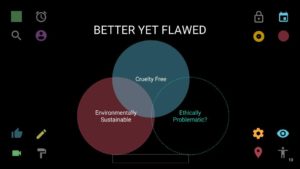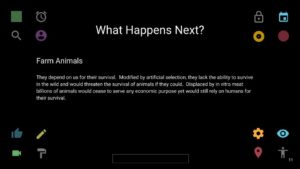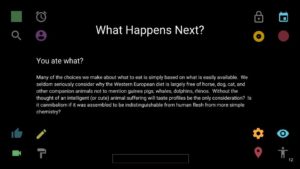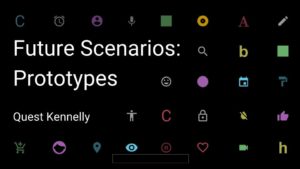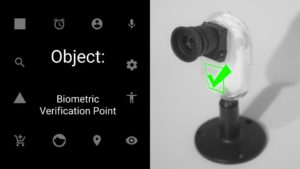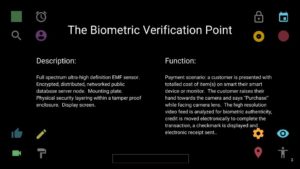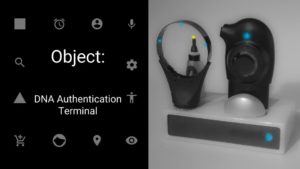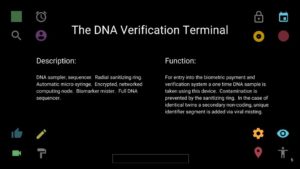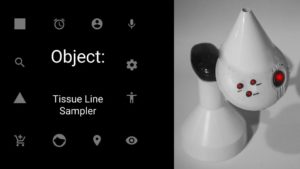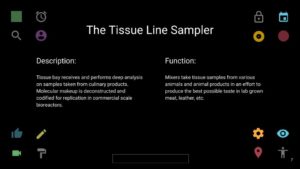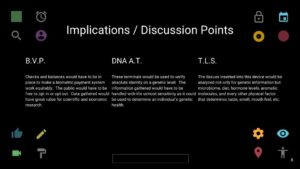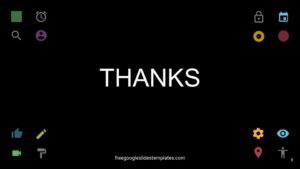Testing Tomorrow: Speculation as Process
Instructors: Chris Woebken, Richard The
Week 7:
Final Project:
Meat Maker φ
Serving Suggestions / Welcome Booklet:
Quickstart Guide:
3D printed improved extrusion nozzle:
Fitting and attaching with filler. Closed body shell with laser cut acrylic and added rubber feet.
Sanding and finishing the surface with XTC-3D Epoxy. Ready for final paint.
Week 6:
Presentations
Week 5:
Scenario, Object, Context, Documentation
3 Photos showing the object in use in context.
All the angles on privacy, what happens when you don’t have access to the registry. Your personal financial history is a commodity. What happens to people that rely on cash. Who owns your data? Dystopian or Utopian outcomes?
Week 4:
Placing your object in context. Where would it exist in the real world? Simulating your object. Putting it to imagined use.
Testing scenarios that unfold over time.
1.Your context
2. Your objects
3. Your script
Using actors to enact the performance of the use of your object.
Discussion of algorithms, neural networks, and machine learning.
Presentation of Assignment 3:
Prototyping objects for future scenarios.
Week 3:
“We are not visualizing what is inevitable but what is probable.”
A sampling of future scenarios discussed in class:
Driverless vehicles
Soil remediation
Urban green space cooling
Urban micro farming
Social justice for nail salon workers
Autonomous trash collection
Incentivized trash reduction
Barcode graffiti
Week 2:
Guest: Mark Torry from the Center for Urban Pedagogy (C.U.P.)
CUP works to demystify urban policy, thereby empowering citizens to make informed choices and understand the law and regulations that impact their lives.
Some of my favorites projects from CUP:
I Got Arrested Now What?
Vendor Power
What’s in the Water?
Future Scenarios Assignment:
Scenario 1
Maglev Delivery Transport in NYC
A system of evacuated tubes is built in the dense urban core of NYC. Pods the size of check through luggage travel through the system by maglev. The pods make automated, autonomous deliveries to residential and commercial buildings served by the network. Pods effectively replace a large number of delivery and transportation services, as well as removing recyclable materials and waste byproducts. Several similar systems have been proposed such as: Foodtubes (http://www.noelhodson.com/index_files/foodtubes-project-team.htm), Mole’s frieght pipelines (http://www.molesolutions.co.uk/), Elon Musk’s Hyperloop for human passengers (http://www.spacex.com/hyperloop), and the Startram space launch system (http://www.startram.com/home).
STEEP:
Social:
With goods delivered to individual buildings there is a steep decrease in traffic caused by delivery vehicles. Delivery drivers lose their jobs. Wear and tear on roads decreases. With groceries, toiletries, and other consumer goods delivered to individual buildings, citizens leave their homes less often, aggravating social atomization.
Technological:
Although the technology necessary to create a system of evacuated tubes driven by magnetic levitation already exists there are advances that will most likely go hand in hand with research, design, and construction. Automation and optimization of pod movement will likely utilize machine learning and A.I.
Ecological:
The system greatly increases efficiency and cuts waste. Electrical consumption increases but gasoline consumption drops significantly. Air pollution is reduced greatly, especially carbon dioxide emissions. Streets are cleaner and surface sewers are plagued by less oil from leaking vehicles.
Political:
Construction of the System would require forward thinking and unified political will. The high levels of cooperation between federal, state, and local bodies necessary to complete such an ambitious project do not exist currently.
Economic: While the transportation sector is nearly replaced outright by the system, other industries enjoy a reduction in delivery times, and save on warehousing. Businesses with access to tube delivery offer consumers same day delivery
Dator’s Archetype:
This future scenario would only be workable in a Grow or Transform state. A Collapse state or a Discipline state would not allow for the cooperation, innovation, and investment of time, energy, and capital needed to build such a system.
Scenario 2
Multimodal Biometric Security, Contracts, and Payments
A step beyond what is currently envisioned as a Cashless Society; a new wave of sophisticated biometrics will supercede passwords, ID, paper money, checks, credit cards, keys, and contracts. Distributed database technology (blockchain) will be merged with a new wave of biometric sensors. Advances in digital video technology will capture fingerprint data, along with 3D facial spatial data, heat signature (thermography), iris scan, voice pattern, hand geometry, height, etc. (http://www.biometricsinstitute.org/pages/types-of-biometrics.html). Once someone becomes part of the public register their identity becomes unimpeachable; even a lifetime of physical changes will be compensated for by the multimodal redundancy.
STEEP:
Social:
Wallets will disappear. Theft will no longer be possible except by extremely clever biohacking. Payments will become nearly instantaneous, requiring no more than a gesture, or a voice cue. Confidence among co-participants will decrease purchase anxiety.
Technological:
Advances in imaging, biometrics, and machine pattern recognition will have to be made in order to make such a system feasible. Positive matches will have to be made with multiple redundancies. A public register will keep the system transparent and ensure equitable use by all participating parties. Responsible mining of the resulting data would be of unparalleled utility for the biomedical sciences. Statistical data derived from the system would inform public policy.
Ecological:
Reduction in waste and increases in efficiency will abound. Robust spending data would enable a resource based economy, and just in time delivery of goods and services.
Political:
There is a danger of totalitarianism resulting from this type of database being under the control of bad actors. If properly implemented it would be open sourced, and distributed in such a way that would curb abuse. Citizens would have to enter the system voluntarily, it would have to balance value with any perceived loss of personal liberties.
Economic:
Increases in security, efficiency, and speed of monetary, and legal transactions. Vendors would make sales with confidence; customers would make purchases with confidence.
Dator’s Archetype:
This future system would be best accomplished in a Grow and/or Tansform scenario. A Collapse condition would destroy feasibility. Collapse would also bring about inevitable abuse of the system as participants foresaw zero-sum outcomes.
Scenario 3
Lab Grown Agricultural Products
Fresh buffalo steaks, goat’s milk, conch, saddle of venison, veal, bluefin tuna, and kobe beef are all available by the kilo at your local GrowLab. The convergence of resource exhaustion, market efficiency, economies of scale, and public demand for cruelty-free gourmet food has brought about lab-grown everything. Unhampered by the need to raise an entire animal for a few ounces of the finest cuts; the future of meat is artisanal, and in vitro. Exotic permutations of the technology lead to lab grown leather, silk, bristle, hair, fur, and other products previously only available as luxury animal derived materials. Some areas of interest: lab grown spider silk (https://www.wired.com/2015/06/bolt-threads-spider-silk/), lab grown dairy (http://modernfarmer.com/2014/12/coming-soon-3-vegan-scientists-lab-grown-milk/), lab grown leather (http://www.modernmeadow.com/).
STEEP:
Social:
After initial fluctuations and fads the market for lab grown meat and dairy brings people the food they want with much less guilt. A drop in price per kilo improves nutritional outcomes globally but also exacerbates existent obesity problems.
Technological:
Genetic manipulation allows us to author the purpose of any number of synthetic organisms. These mostly single celled organisms have the potential to act as organic chemistry plants that produce desirable complex products from rudimentary base materials. Tissue culturing advances to the point where producers are focussed on artistry. Blending cell lines and growing mediums to generate the best taste, texture, and descriptions. Sophistication and innovation drive each other in tandem.
Ecological:
Enormous reduction in greenhouse gasses from ranching. Restoration of lost habitats as grazing land is no longer needed. Reduction in the usage and contamination of water resources.
Political:
The public begins to regard the raising of animals for slaughter as unthinkable. Expansion of rights to non-human animals accelerates. Unemployment in the agricultural sectors may be problematic.
Economic:
Increases in efficiency. Reduction in costs related to transportation, land, resources, waste, etc.
Dator’s Archetype:
This future system would likely be untenable without advances in technology that could only come from a Grow or otherwise stable state of affairs.
Week 1:
Found object amalgamation project.
Reading: Speculative Everything: 1-2
Research Assignment: A System in New York
TUBES
By Quest Kennelly
“A series of tubes” was how former Senator Ted Stevens (R-Alaska) famously characterized the internet; simultaneously demonstrating his inexcusable ignorance of how the actual internet works, but also in a quaint way, accidentally referenced a system of data delivery that preceded the internet. The New York Pneumatic Tube Mail System.
Left to right: A launching and receiving bay, Remains of tube infrastructure, Tube canister, Mail room.
http://untappedcities.com/2013/03/15/nycs-pneumatic-tube-mail-network/
Parts of The Pneumatic Mail System of New York still exist although it has not been in use since 1952 when service was halted pending review. At it’s height it spanned Manhattan from Harlem to Wall Street. The system moved canisters of mail through tubes by use of compressed air and partial vacuum. It was fast and efficient but it’s construction was problematic and operating costs eventually proved too great to compete with automobile delivery.
“The system, which was located 4 to 6 feet below the city streets, was created and owned by private companies, to which the city paid rent and labor. According to Kate Ascher, author of The Works, “The high operating costs of the pneumatic system ultimately proved its downfall. By 1918, the federal government considered the annual rental payments ($17,000 per mile per annum) made by the post office to be ‘exorbitant’ and endorsed a new alternative with greater capacity–the automobile–as the delivery method of choice.” In New York City, a successful lobby by contractors led to the reinstatement of pneumatic mail service in 1922. A complete stop didn’t happen until 1953.”
http://untappedcities.com/2013/03/15/nycs-pneumatic-tube-mail-network/
The use of tube transport writ large, as a way to move people around a futuristic New New York showed up in Matt Groening’s “Futurama” animated series in 1999.
Current interest in practical tube transport has had a renaissance due in no small part to Elon Musk’s 2013 proposal:
“It’s not quite the personal transportation system seen in Futurama, but it’s close. Musk’s original white paper detailing the design was published in 2013, and envisions two tubes attached to above-ground pylons that transport pods filled with whatever—humans, livestock, consumer goods—from one city to another. The tubes are partially pressurized, and motors on the pods themselves create a cushion of air that allows them to float through the tubes, pushed along by magnets on the inside and outside of the tube that repel each other.”
Remains of the New York Pneumatic Mail System have become difficult to see today but you may have some luck following these leads:
http://weburbanist.com/2009/04/11/a-series-of-tubes-pneumatic-networks-past-present-futurama/
Functional pneumatic tube delivery systems still exist today but they are largely limited to corporate properties such as hospitals, factories, etc.

